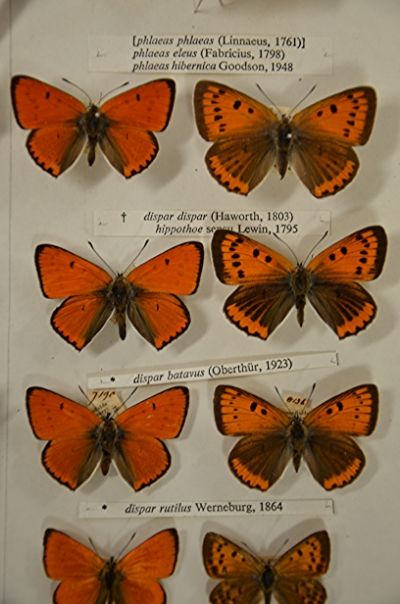|
|
Post by nomad on Oct 26, 2014 0:44:24 GMT -8
There has been some previous discussion as to whether there were any real differences between the extinct nominate English L. dispar race and the Dutch race batavus. Here are some of my impressions after viewing a considerable amount of material of both races in the Oxford University museum. It has been mentioned that some of the old English females were very large but size can never be a distinguishing factor as regards subspecies. However, when comparing the females of the two races there are some notable differences especially in wing shape. The forewing of batavus seems to be slightly narrower and dorsum seems to be straighter . The hindwing apex in batavus is more actute and less rounded than in dispar. The females of Subspecies rutilus seems to be easily distinguished not only by their small size, but being much less heavily marked than either dispar or batavus. Three subspecies of L. dispar.  |
|
|
|
Post by nomihoudai on Oct 26, 2014 1:42:29 GMT -8
Dorsal sides and wing shapes are of no significance in Lycaeninae. If anything, then the ventral side.
|
|
|
|
Post by nomad on Oct 26, 2014 3:41:08 GMT -8
Dorsal sides and wing shapes are of no significance in Lycaeninae. If anything, then the ventral side. Those often constant wings shapes would look pretty much the same from the underside? That's quite a statement about the recto surfaces of Lycaeninae not being diagnostic. I disagree with this statement to a certain extent, but I do agree the verso surfaces would need to be examined in many species. |
|
|
|
Post by nomad on Oct 26, 2014 3:50:01 GMT -8
Well, I do not think this is very significant. It pay probably only on those 4 pairs above on your photos. If I get for you my rutilus females, for sure you would pick up several dispar dispar spcimens... Well if you study lots of L. dispar dispar you are going to confuse them with rutilus. |
|